| |
|
|
| |
Moving Up.
Thu 11th December, 2014
|
|
|
|
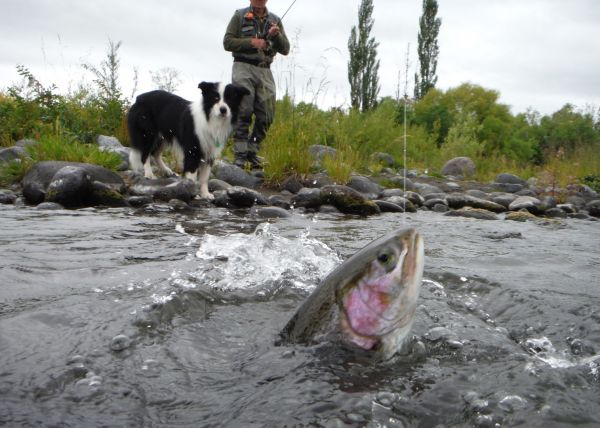 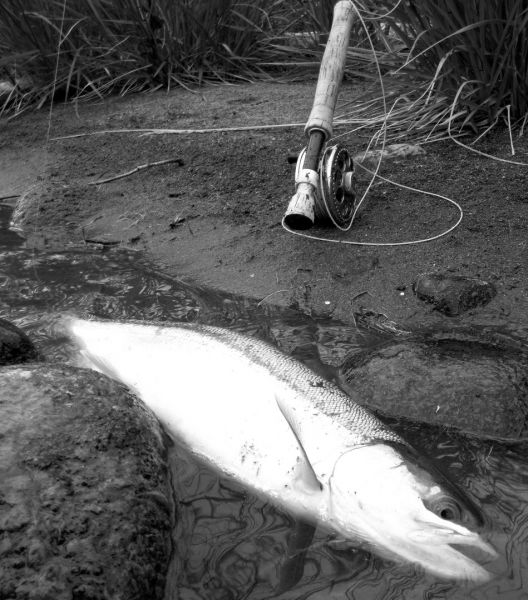
Nothing much has changed since the last report.
Still plenty of recovering fish around with more small pods of fresh run fish moving up.
The fish aren't the only ones on the move.
We've been spending more and more of our time in Turangi, particularly over the the last six years. In fact there's been a bit of a role reversal going on and our home in Kapiti was fast becoming the bach ... and vice versa.
For a while now Gail has fancied a complete life-style change including retiring from her very busy and stressful job in Wellington, so I think it was inevitable that we'd sell up down there and move up here permanently.
Both of us have always had a bit of a soft spot for the area and we found a place just up the road which after some alterations will suit us down to the ground ... so a hectic couple of months coming up with one thing and another.
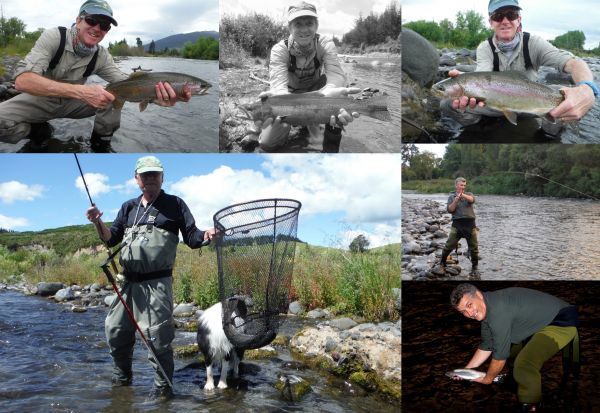 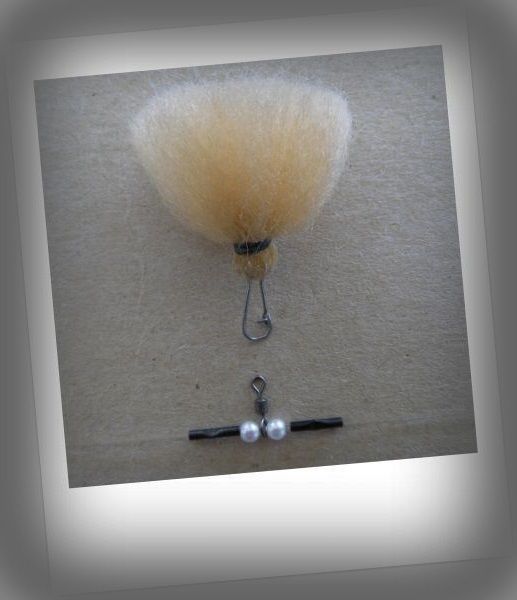 I often get asked about my indicator setup because it looks a little different from other methods commonly used, so here it is again. I often get asked about my indicator setup because it looks a little different from other methods commonly used, so here it is again.
Originally the bits and pieces were brought over from the UK but you can get them in most New Zealand tackle shops if they have a surf casting section.
The rig crimps and small beads were intended to trap the tiny swivels that carried the hook snoods on sea-fishing traces and were crimped down hard enough to lock those permanently in position on the trace. But by using a little less pressure when you crimp them they'll grip the line without damaging it and allow you to reposition the indicator up or down whenever you need to adjust the depth.
Over the years I've simplified and refined the leader for conditions on the Tongariro and it works well.
I use around 5ft of twenty pound breaking strain for the butt end which has a loop tied on one end.
This is attached to the fly line "loop to loop", Now thread on a crimp, then a bead, small swivel, bead, crimp in that order and finish by attaching another small swivel to the tag end of the 20lb line. I keep a few of these already made up in my vest.
The size of these swivels is important as I'll explain later.
Using round nose or proper crimping pliers squeeze the middle of the crimps so that they'll move when you need to slide the indicator up or down but not when you cast or strike.
Now tie eight feet of 8lb BS to the end swivel, attach your flies and clip an indicator to the "trapped" swivel.
There's a couple of reasons why I incorporate swivels in my leader setup.
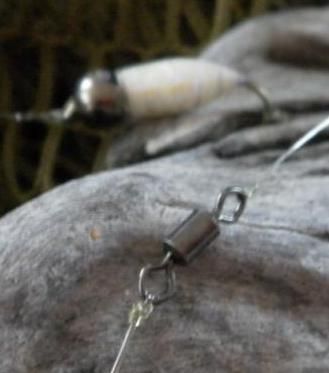 Firstly they provide convenient connection points for both the indicator and the rest of the leader and they help with line twist. Casting and retrieving heavy flies and indicators will eventually introduce twist into your leader and fly line, swivels will help prevent some of this. Firstly they provide convenient connection points for both the indicator and the rest of the leader and they help with line twist. Casting and retrieving heavy flies and indicators will eventually introduce twist into your leader and fly line, swivels will help prevent some of this.
But its no good just using any old swivel ... for fly fishing leaders they need to be small.
My supply is getting a bit low now but I brought out with me some of the "Supa swivels" that I used for sea-fishing back in Wales. These are a quality swivel, small but incredibly strong for their size.
The reason swivel choice is so important is that light lines and big poorly made swivels just won't work because the swivel won't "swivel".
The lighter braking strain lines that we use to construct parts of the leader won't generate enough torque to turn the eye of a large swivel and you may as well have it connected to a micro ring.
But your choice of line can also help with this.
Mono filaments specifically designed for use with spinning reels are usually stiffer than other mono's. This helps them resist twist which in turn produces more torque. Maxima Chameleon is a good example as are some produced by Stren.
Like a lot of other anglers I use good old Maxima Ultra Green because its cost effective, durable, has good knot strength and almost disappears in water. Its easily available and although its quite a supple line straight off the spool, some tests show it gets stiffer with use ... I'll have to try eating some!
The other important thing with this leader set up is its designed so that where ever you're fishing on the Tongariro most of the leader that's actually below the surface consists of the thinner line, this produces less drag during the drift allowing the flies to sink quickly and helps keep them down for longer.
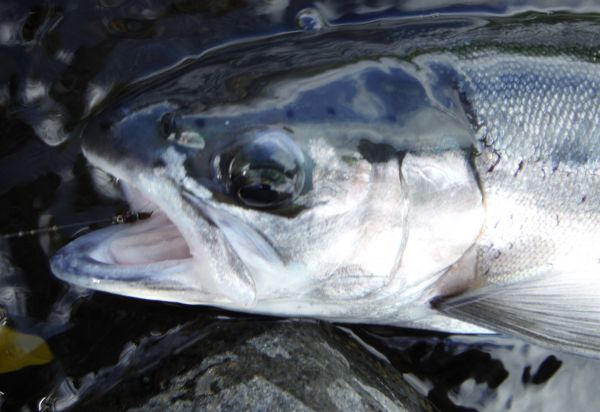 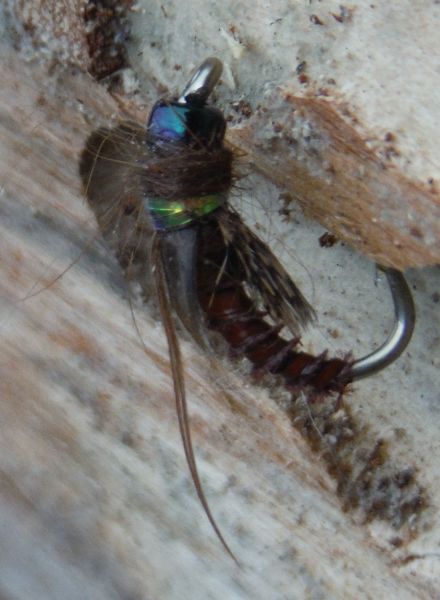
Now that that the wind has finally eased the evening rise is proving popular. Although I didn't stay for the rise last night when I left the Major Jones around 8.00pm there were already several anglers waiting for the action to start and I heard this morning that just like the night before there was plenty going on there.
During the day the birds will soon let you know that mayfly duns are "coming off". And even though the little brown bug is tied to represent a small brown stonefly nymph it seems to work well when I'm nymphing with the big dry as mayfly nymphs make their way to the surface. I've caught a lot of fish on this pattern over the last few weeks.
Its been a drier November than usual but for the last few hours we've had steady rain and the river flow has increased from 24 cumecs to just over thirty. The outlook for December is for plenty of high pressure with things really settling down during the second half of the month.
Whatever happens some of the best runs last year actually occurred in January so its going to be an interesting couple of months.I'm still waiting for my first good brown but there are rumors of browns taking frog patterns around the lake edges and feeder streams.
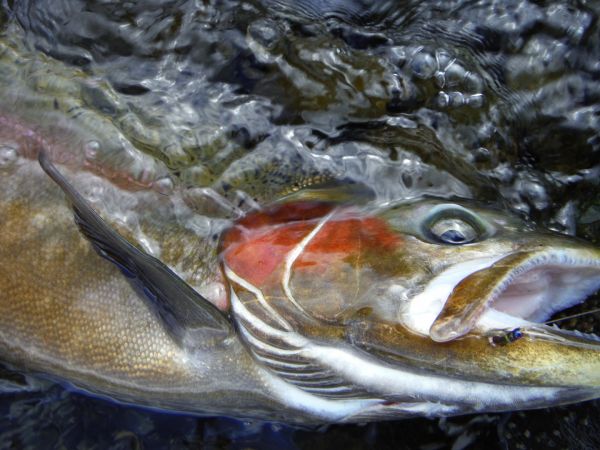
I'll have to hop in the wagon and get over there.
Tight lines guys
Mike |
|
|
| Back to Top |
|
|
|
|
|
|
|